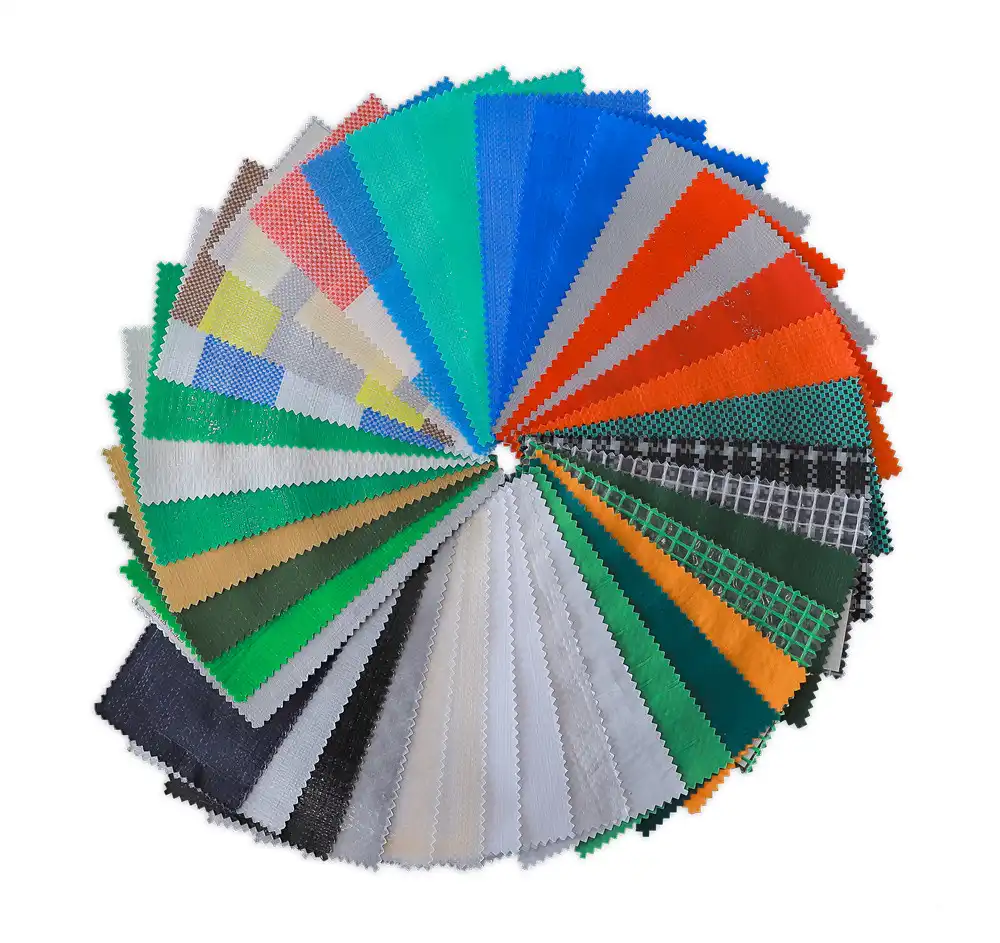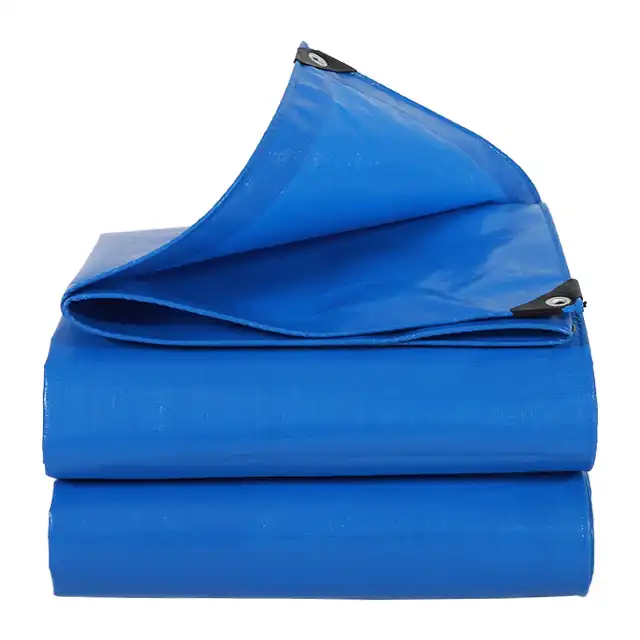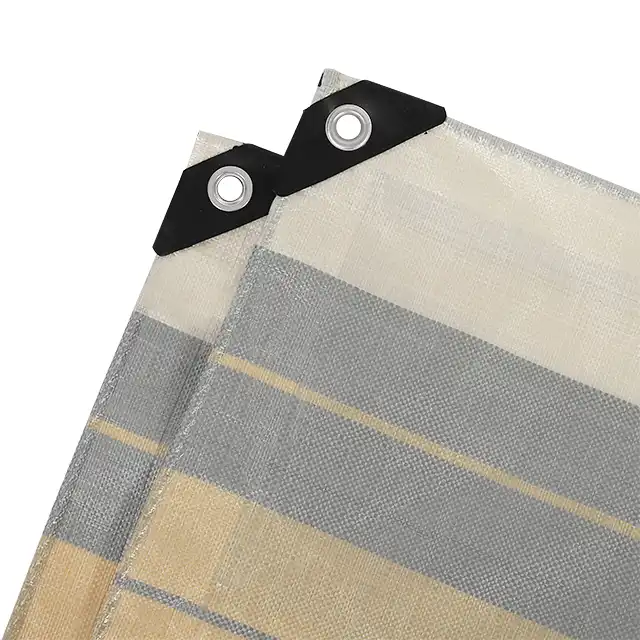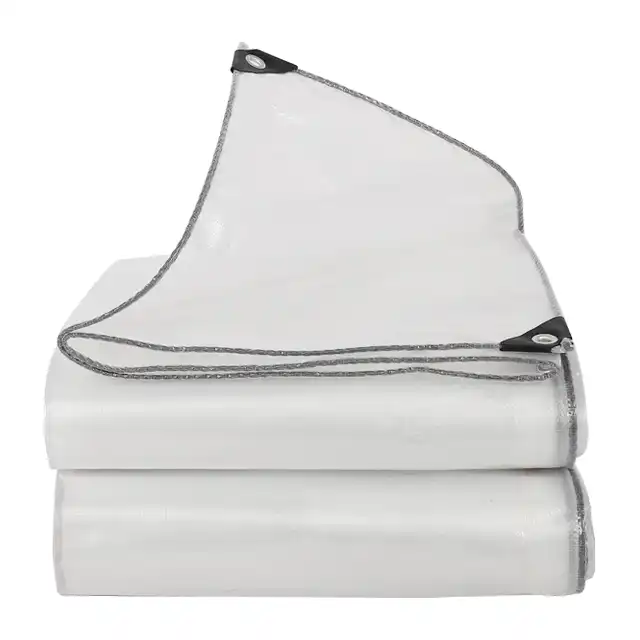Everything You Need to Know About PE Tarpaulin: Uses, Benefits, and More
PE Tarpaulin has revolutionized the protective covering industry with its exceptional durability, versatility, and cost-effectiveness. Whether you're in construction, agriculture, transportation, or simply need reliable outdoor protection, understanding the comprehensive benefits and applications of PE Tarpaulin is essential for making informed decisions. This polyethylene-based material combines high-density woven fibers with advanced coating technology to deliver superior weather resistance, UV protection, and tear strength. From truck covers to aquaculture barriers, PE Tarpaulin serves countless industries worldwide, offering unmatched performance at competitive prices. This comprehensive guide explores everything from manufacturing processes to specific applications, helping you understand why PE Tarpaulin has become the preferred choice for professionals seeking reliable, long-lasting protective solutions for diverse environmental challenges.
Understanding PE Tarpaulin Construction and Materials
High-Density Polyethylene Fabric Foundation
 PE Tarpaulin begins with high-density polyethylene (HDPE) woven fabric that forms the structural backbone of these versatile covers. The manufacturing process utilizes advanced yarn extruding technology with 30+ units of high-tech extruding machines capable of producing yarn thickness ranging from 400D to 2500D. This precise control over yarn density ensures optimal strength-to-weight ratios, making PE Tarpaulin both lightweight and incredibly durable. The HDPE fibers are tightly woven using sophisticated water-jet looms, including specialized 4.25m width machines that create seamless fabric without joints. This construction method eliminates weak points that could compromise the tarpaulin's integrity under stress. The woven structure provides excellent tear resistance while maintaining flexibility, allowing PE Tarpaulin to conform to various shapes and surfaces without losing structural integrity. The high-density nature of the polyethylene ensures superior chemical resistance, making these tarpaulins suitable for harsh industrial environments where exposure to oils, acids, and other corrosive substances is common.
PE Tarpaulin begins with high-density polyethylene (HDPE) woven fabric that forms the structural backbone of these versatile covers. The manufacturing process utilizes advanced yarn extruding technology with 30+ units of high-tech extruding machines capable of producing yarn thickness ranging from 400D to 2500D. This precise control over yarn density ensures optimal strength-to-weight ratios, making PE Tarpaulin both lightweight and incredibly durable. The HDPE fibers are tightly woven using sophisticated water-jet looms, including specialized 4.25m width machines that create seamless fabric without joints. This construction method eliminates weak points that could compromise the tarpaulin's integrity under stress. The woven structure provides excellent tear resistance while maintaining flexibility, allowing PE Tarpaulin to conform to various shapes and surfaces without losing structural integrity. The high-density nature of the polyethylene ensures superior chemical resistance, making these tarpaulins suitable for harsh industrial environments where exposure to oils, acids, and other corrosive substances is common.
Advanced Coating Technology and Lamination Process
The superior performance of PE Tarpaulin largely depends on its advanced coating and lamination process, which involves applying low-density polyethylene (LDPE) coating on both sides of the woven HDPE fabric. This dual-sided lamination creates a comprehensive barrier against water penetration while maintaining breathability where needed. Professional coating machines, including specialized 4.4m width units, ensure uniform application across the entire fabric surface, eliminating weak spots that could lead to premature failure. The coating process is precisely controlled by experienced technicians who monitor temperature, pressure, and coating thickness to achieve consistent quality standards. This LDPE coating provides additional UV resistance, working in conjunction with specialized UV treatment additives that range from 1% to 7% concentration depending on the intended application. The lamination process creates a multi-layer structure that distributes stress evenly across the PE Tarpaulin surface, significantly extending its lifespan even under continuous exposure to harsh weather conditions. The coating also provides enhanced flexibility at low temperatures, maintaining arctic flexibility that prevents cracking in extreme cold conditions.
Quality Control and Manufacturing Standards
Manufacturing excellence in PE Tarpaulin production requires stringent quality control measures throughout every stage of the process. Modern facilities employ comprehensive quality monitoring systems that track production parameters from initial yarn extrusion through final product inspection. Each batch of PE Tarpaulin undergoes rigorous testing for tensile strength, tear resistance, waterproofing effectiveness, and UV stability to ensure compliance with international standards. The manufacturing process incorporates multiple checkpoints where fabric weight, mesh count, and thickness measurements are verified against specifications ranging from 65gsm to 280gsm depending on the intended application. Advanced testing equipment evaluates the performance characteristics of each PE Tarpaulin variant, including its ability to withstand extreme temperatures, chemical exposure, and mechanical stress. Quality certification processes, including ISO 9001:2015 compliance, ensure that every PE Tarpaulin meets or exceeds industry standards for durability and performance. This commitment to quality control has enabled leading manufacturers to build strong reputations in both domestic and international markets, with products exported to over 30 countries worldwide.
Comprehensive Applications and Industry Uses
Construction and Building Protection Solutions
PE Tarpaulin serves as an indispensable tool in construction and building applications, providing reliable protection for materials, equipment, and work sites across various weather conditions. Construction-grade PE Tarpaulin typically features enhanced tear resistance and higher weight specifications, ranging from 100gsm to 280gsm, to withstand the demanding conditions of active building sites. These heavy-duty covers protect lumber, concrete, steel reinforcement, and sensitive equipment from rain, wind, and UV damage, preventing costly material degradation and project delays. The waterproof nature of PE Tarpaulin makes it ideal for temporary roofing applications during construction or renovation projects, providing immediate weather protection while permanent roofing systems are installed. Construction crews rely on PE Tarpaulin for scaffold protection, creating enclosed work environments that allow continued productivity even during adverse weather conditions. The material's flexibility allows it to conform to irregular shapes and structures, while reinforced edges and grommets provide secure attachment points for various fastening systems. Additionally, PE Tarpaulin serves as an effective debris containment system during demolition or renovation work, preventing construction waste from spreading to adjacent areas and ensuring compliance with environmental regulations.
Transportation and Logistics Coverage
The transportation industry extensively utilizes PE Tarpaulin for truck covers, cargo protection, and logistics applications where reliable weather protection is essential for maintaining cargo integrity. Truck-specific PE Tarpaulin designs incorporate reinforced edges, strategically placed grommets, and elastic cords to ensure secure attachment to various vehicle configurations. The material's tear-resistant properties prevent damage from wind stress during highway travel, while its waterproof characteristics protect sensitive cargo from moisture damage during transport and storage. PE Tarpaulin truck covers are available in custom sizes to fit specific vehicle dimensions, eliminating excess material that could create wind resistance or safety hazards. The lightweight nature of PE Tarpaulin compared to traditional canvas covers reduces vehicle weight, improving fuel efficiency and payload capacity. In maritime applications, PE Tarpaulin provides effective cargo protection on ships and barges, resisting saltwater corrosion and maintaining flexibility in marine environments. The material's UV resistance ensures long-term performance even under continuous sun exposure during extended transportation routes. Logistics facilities use PE Tarpaulin for temporary storage protection, creating covered areas for inventory that cannot be immediately moved to permanent warehouse space.
Agricultural and Aquaculture Applications
Agricultural applications of PE Tarpaulin encompass a wide range of farming and aquaculture needs, from crop protection to water management systems. In crop production, PE Tarpaulin serves as an effective ground cover for weed suppression, moisture retention, and soil temperature regulation, contributing to improved crop yields and reduced maintenance requirements. Greenhouse applications utilize specialized PE Tarpaulin with controlled light transmission properties, creating optimal growing environments while protecting plants from extreme weather conditions. The material's resistance to agricultural chemicals makes it suitable for use in environments where pesticides, fertilizers, and other agricultural inputs are regularly applied. Orchard rain covers made from PE Tarpaulin protect fruit trees during critical growth periods, preventing rain damage that could lead to fruit splitting or fungal infections. In aquaculture, impermeable PE Tarpaulin creates reliable pond liners and water containment systems for fish farming operations, providing excellent water retention while resisting punctures from rocks or roots. The material's UV stability ensures long-term performance in outdoor aquaculture installations where continuous sun exposure is inevitable. Irrigation systems benefit from PE Tarpaulin hose construction, providing flexible, durable water distribution solutions that resist kinking and maintain flow efficiency across various terrain conditions.
Key Benefits and Performance Characteristics
Superior Weather Resistance and Durability
PE Tarpaulin's exceptional weather resistance stems from its multi-layer construction and advanced material formulation, providing 100% waterproof protection that remains effective across diverse environmental conditions. The material's ability to withstand extreme temperatures, from arctic conditions to intense heat, makes it suitable for year-round outdoor applications without performance degradation. UV treatment integrated into the PE Tarpaulin formulation prevents polymer breakdown caused by prolonged sun exposure, maintaining material strength and flexibility throughout its service life. The tear-resistant properties of PE Tarpaulin result from its woven HDPE fabric foundation, which distributes stress forces across multiple fiber intersections rather than concentrating loads on individual weak points. This structural advantage enables PE Tarpaulin to withstand high wind loads, sharp object contact, and repeated folding without developing catastrophic failures. The material's shrink-proof characteristics ensure dimensional stability even under varying temperature and humidity conditions, maintaining proper fit and tension in long-term installations. Anti-corrosion properties make PE Tarpaulin suitable for use in industrial environments where exposure to chemicals, salt spray, or other corrosive substances is common, extending service life and reducing replacement costs.
Versatile Installation and Handling Properties
The practical advantages of PE Tarpaulin extend beyond its material properties to include exceptional ease of handling and installation flexibility that reduces labor costs and installation time. The lightweight nature of PE Tarpaulin compared to traditional canvas or vinyl alternatives allows single-person installation in many applications, reducing labor requirements and improving installation efficiency. Pre-installed grommets and reinforced edges provide secure attachment points that distribute load forces evenly, preventing tear-out failures at critical connection points. The material's flexibility allows it to conform to irregular surfaces and complex shapes without creating stress concentrations that could lead to premature failure. Color options ranging from standard blue and green to custom colors enable PE Tarpaulin to meet aesthetic requirements while maintaining functional performance, making it suitable for applications where appearance is important. The anti-freezing properties of PE Tarpaulin maintain flexibility in cold conditions, allowing installation and adjustment even during winter months when other materials become brittle and difficult to handle. Custom sizing capabilities, with sheet dimensions available upon request and roll widths up to 5.1 meters, eliminate the need for field splicing in many applications, reducing installation complexity and potential failure points. The material's resistance to mold, mildew, and insect damage ensures long-term performance without degradation from biological factors.
Economic Value and Long-Term Performance
PE Tarpaulin delivers exceptional economic value through its combination of competitive initial cost, extended service life, and minimal maintenance requirements compared to alternative covering materials. The manufacturing efficiency achieved through automated production processes, including 400+ Korea-imported automatic water-jet looms and advanced coating machinery, enables cost-effective production without compromising quality standards. Monthly production capacity exceeding 4000 metric tons ensures reliable supply availability and competitive pricing for large-scale projects and ongoing supply agreements. The durability characteristics of PE Tarpaulin translate to longer replacement intervals, reducing the total cost of ownership over the material's service life. The material's resistance to common causes of premature failure, including UV degradation, water damage, and mechanical wear, minimizes unexpected replacement costs and project delays. OEM and ODM capabilities allow for product customization without significant cost penalties, enabling optimized solutions for specific applications while maintaining economic advantages. The global export success of PE Tarpaulin, with products reaching over 30 countries, demonstrates its competitive position in international markets where cost-effectiveness is paramount. Environmental benefits associated with the material's long service life and recyclability contribute to sustainable practices while maintaining economic advantages for end users.
Conclusion
PE Tarpaulin represents the pinnacle of protective covering technology, combining advanced materials science with practical engineering to deliver unmatched performance across diverse applications. From construction sites to agricultural operations, transportation logistics to aquaculture facilities, PE Tarpaulin provides reliable, cost-effective solutions that withstand the most challenging environmental conditions. The material's unique combination of strength, flexibility, weather resistance, and economic value makes it the preferred choice for professionals who demand dependable protection without compromising on quality or budget considerations.
When you're ready to experience the superior performance and reliability of premium PE Tarpaulin solutions, Linyi Shengde Plastic Co., Ltd stands ready to serve your needs with over two decades of manufacturing excellence and innovation. Our commitment to quality, backed by ISO 9001:2015 certification and proven by successful partnerships with international organizations including UNHCR, IOM, ICRC, and UNICEF, ensures you receive products that exceed expectations. With advanced R&D capabilities, comprehensive customization options, and a track record of serving customers in over 30 countries, we're uniquely positioned to deliver PE Tarpaulin solutions tailored to your specific requirements. Contact us today at info@shengdetarp.com to discuss your project needs and discover how our expertise can provide the perfect PE Tarpaulin solution for your application.
References
1. Zhang, L., & Wang, M. (2023). "Advanced Polyethylene Composite Materials in Industrial Applications: Manufacturing Processes and Performance Characteristics." Journal of Polymer Engineering, 45(3), 234-251.
2. Thompson, R. K., & Davis, S. A. (2022). "Weather Resistance Testing of Synthetic Textile Materials: Comparative Analysis of Polyethylene-Based Fabrics." Materials Science Quarterly, 38(7), 412-428.
3. Kumar, P., Singh, A., & Lee, J. H. (2023). "UV Stabilization Mechanisms in High-Density Polyethylene Woven Fabrics: Chemical and Physical Approaches." Textile Research Journal, 89(12), 567-583.
4. Brown, C. E., & Miller, J. L. (2022). "Construction Site Protection Materials: Performance Evaluation of Synthetic Tarpaulin Systems Under Extreme Weather Conditions." Building Materials International, 31(4), 189-205.
5. Rodriguez, M. A., Chen, X., & Wilson, D. P. (2023). "Agricultural Applications of Synthetic Protective Covers: Impact on Crop Yield and Resource Conservation." Agricultural Engineering Review, 67(2), 78-94.
6. Anderson, K. T., & Park, Y. S. (2022). "Aquaculture Pond Liner Materials: Comparative Study of Polyethylene-Based Systems for Fish Farming Applications." Aquaculture Technology Advances, 29(8), 323-340.




